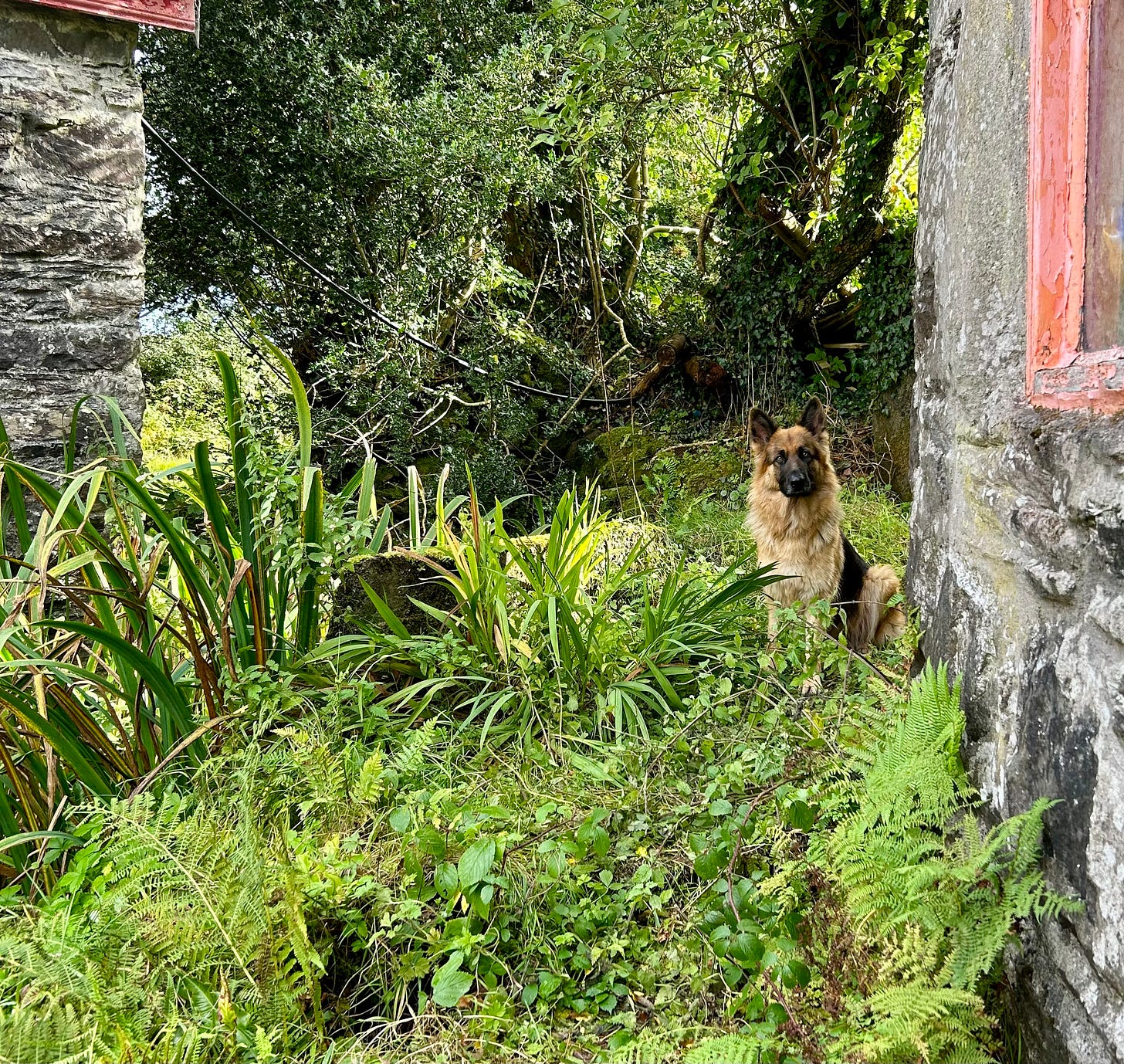Home and an Elderberry Elixir
Dia dhuit, friends and readers. I have welcomed a few new paid subscribers over the past few weeks, whilst I was offline, a pleasant surprise to come back to, including a faraway cousin and an old friend as well as a couple of strangers. Thank you for being here. Your support really means a lot. I put a lot of time and energy into these words and this space, and I am deeply grateful for the reciprocation and support of a paid subscription. And in this world, spread across oceans, money as a medium of exchange, of reciprocity, well, it works. And it helps. So I thank you, I am much obliged.
At the end of this post I’ll share a recipe I’ve been swearing by for years for a brandy and honey, elderberry and calendula cold and flu elixir (or just a really good, warming winter tipple if you like). But first, the story of how we came to buy a burnt down house.
I write you this from a sanctuary of stone. Thick, solid walls that keep the weather out. A slate roof that sheds the rain (well, most of it—never mind a few drips seeping through the old, cracked and crumbling slates) and muffles the sounds of the rain and wind. I hardly know what the weather is doing outside until I open the door and step out into a wildly overgrown, long-forgotten garden spilling weeds and old-fashioned roses onto mossy, stone paths, surrounded by stone walls, whispering birch, wizened elder and dense, dark holly. And the ash spiralling over us, dancing with the breeze. It is peaceful. The calm. The shelter. The trees buffering the wind, softening the air. Air filled with the songs of blackbirds, robins and song thrushes.
The place we have come to make our home in was run as a spiritual retreat by the people who lived here before us and it has the feel of a sacred place. But a place much older than they or the gurus they followed. It is a place of ghosts and memories, and of faeries, folklore and magic. A pocket of mature, old woodland, deep in the hills. Everywhere there are ancient stone walls and ruins, buried in the moss and mould of centuries, wrapped with tree roots and tangled in ivy. The trees are as old as the ruins. Perhaps even older. Majestic oaks and ancient hollies. It lies within the Gaeltacht Mhúscraí, one of the few remaining, small pockets of Ireland where Irish Gaelic is still and has always been the spoken language (still spoken in normal daily life by a majority of the population). Where resistance to Anglicisation was and remains strongest. Where Ireland is still Ireland. Still the Ireland of old. Still the Ireland my family came to and fell in love with thirty-four years ago. The Ireland that woke deep, ancestral memories of home, that wrapped herself around us like tendrils of ivy wrap around a tree, pulled us into the green, into the magic of the land.
I feel like this move off of the hill requires an explanation. Many of you have been with me since the start of this Substack two years ago when we sold our little cottage on an acre and paid off our mortgage to move onto the land we were farming twenty-five miles away in a leaky old caravan and the rough “shepherd’s hut” we built onto it.


